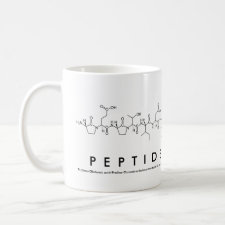
Authors: Zhao Y
Article Title: Sequence-Selective Recognition of Peptides in Aqueous Solution: A Supramolecular Approach through Micellar Imprinting.
Publication date: 2018
Journal: Chemistry - A European Journal
Volume: 24
Issue: (53)
Page numbers: 14001-14009.
DOI: 10.1002/chem.201801401
Abstract: Sequence-selective recognition of peptides in water has been one of the most important and yet unsolved problems in bioorganic and supramolecular chemistry. The motivation comes from not only the importance of these molecules in biology but also the fundamental challenges involved in the research. Molecular imprinting in doubly cross-linked surfactant micelles offers a unique solution to this problem by creating a 'supramolecular code' on the micelle surface that matches the structural features of the peptide chain. Hydrophobic 'dimples' are constructed on imprinted micelles that match the hydrophobic side chains of the peptide precisely in size and shape. Polar binding functionalities are installed at correct positions to interact with specific acidic and basic groups on the peptide. Secondary hydrogen-bonding and electrostatic interactions are introduced through imprinting to enhance the binding affinity and specificity further. Binding affinities of tens of nanomolar are readily achieved in water for biological peptides with over a dozen residues. Excellent binding selectivity is observed even for subtly different peptides. The synthesis of these protein-sized nanoparticles involves a one-pot reaction complete within 2 days; purification requires nothing but precipitation and solvent washing. These features make the molecularly imprinted nanoparticles (MINPs) highly promising peptide-binding 'artificial antibodies' for chemical and biological applications
Template and target information: peptides
Author keywords: molecular imprinting, nanoparticles, peptides, receptors, supramolecular chemistry



Join the Society for Molecular Imprinting

New items RSS feed
Sign-up for e-mail updates:
Choose between receiving an occasional newsletter or more frequent e-mail alerts.
Click here to go to the sign-up page.
Is your name elemental or peptidic? Enter your name and find out by clicking either of the buttons below!
Other products you may like:
 MIPdatabase
MIPdatabase









